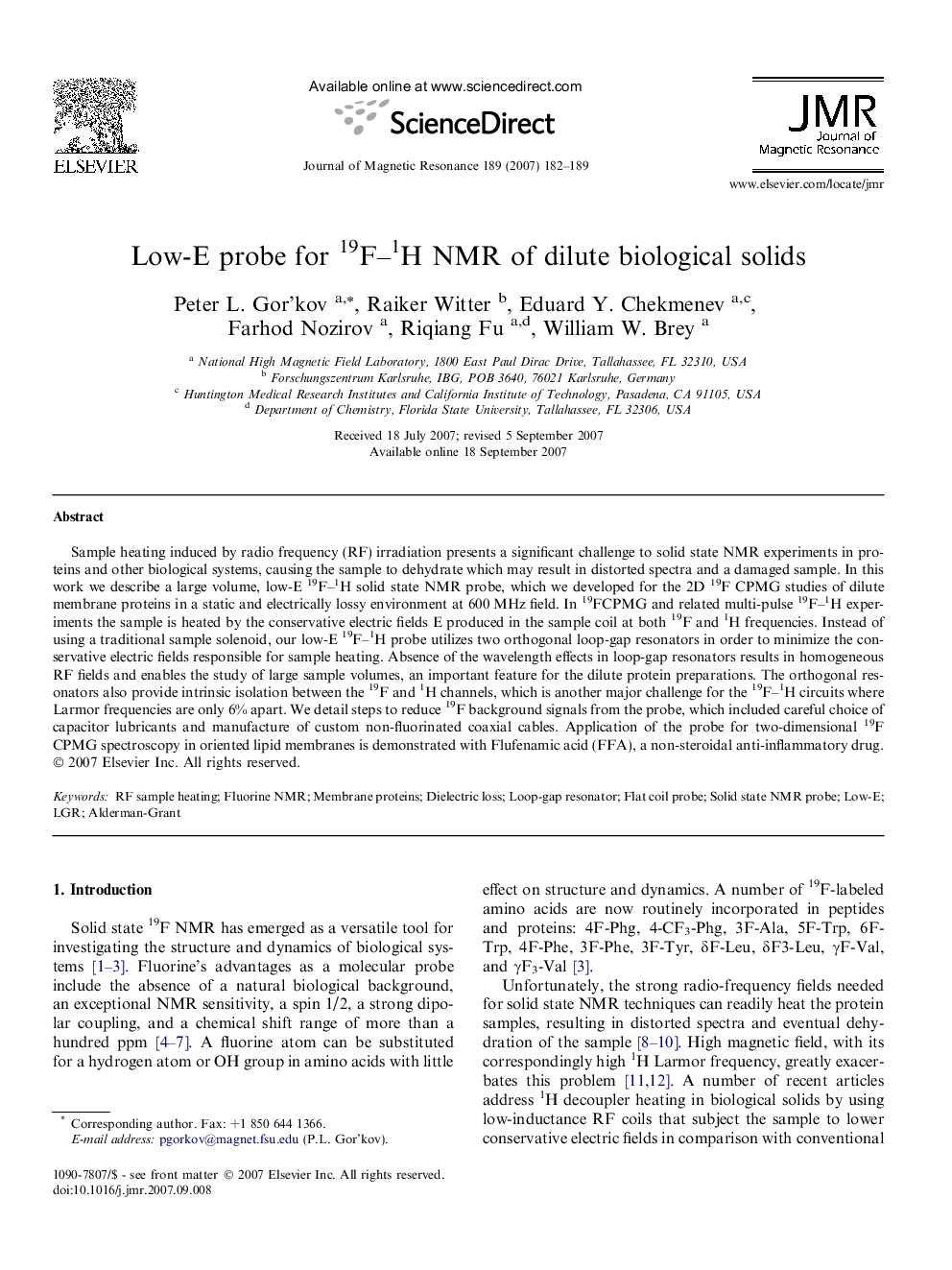| Article ID | Journal | Published Year | Pages | File Type |
|---|---|---|---|---|
| 5407377 | Journal of Magnetic Resonance | 2007 | 8 Pages |
Abstract
Sample heating induced by radio frequency (RF) irradiation presents a significant challenge to solid state NMR experiments in proteins and other biological systems, causing the sample to dehydrate which may result in distorted spectra and a damaged sample. In this work we describe a large volume, low-E 19F-1H solid state NMR probe, which we developed for the 2D 19F CPMG studies of dilute membrane proteins in a static and electrically lossy environment at 600Â MHz field. In 19FCPMG and related multi-pulse 19F-1H experiments the sample is heated by the conservative electric fields E produced in the sample coil at both 19F and 1H frequencies. Instead of using a traditional sample solenoid, our low-E 19F-1H probe utilizes two orthogonal loop-gap resonators in order to minimize the conservative electric fields responsible for sample heating. Absence of the wavelength effects in loop-gap resonators results in homogeneous RF fields and enables the study of large sample volumes, an important feature for the dilute protein preparations. The orthogonal resonators also provide intrinsic isolation between the 19F and 1H channels, which is another major challenge for the 19F-1H circuits where Larmor frequencies are only 6% apart. We detail steps to reduce 19F background signals from the probe, which included careful choice of capacitor lubricants and manufacture of custom non-fluorinated coaxial cables. Application of the probe for two-dimensional 19F CPMG spectroscopy in oriented lipid membranes is demonstrated with Flufenamic acid (FFA), a non-steroidal anti-inflammatory drug.
Related Topics
Physical Sciences and Engineering
Chemistry
Physical and Theoretical Chemistry
Authors
Peter L. Gor'kov, Raiker Witter, Eduard Y. Chekmenev, Farhod Nozirov, Riqiang Fu, William W. Brey,
